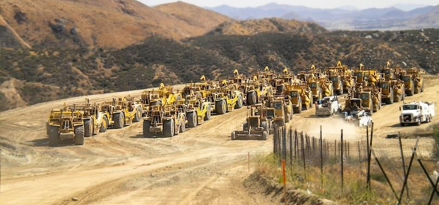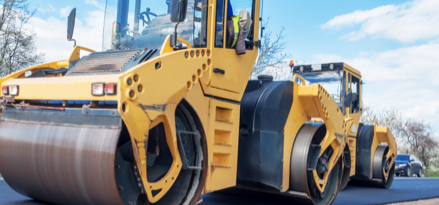Construction businesses have always had to be nimble to remain profitable. But, given increased demands, supply chain disruptions, and workforce shortages that are causing an increase in the cost of building materials and labor, the need for smart thinking is greater than ever before.
There may be no better time than now to reassess your heavy equipment maintenance practices to help you reduce your overall operational costs and equipment downtime. Our Mobil℠ Team has shared its best practices for construction equipment maintenance, gathered from their decades of experience in partnering with businesses across the country to protect their investments in their heavy equipment.
1.Stay organized
With all the changes taking place and the increased competitiveness across the industry, it’s imperative to minimize unplanned equipment downtime. As you know, downtime can cost money and require valuable employee time, both of which continue to be limited resources. Staying organized is the key.
“The first thing I do when I work with a new customer is look into the type of equipment they’re using and really try to understand the kind of project they’re working on,” said Senior Field Technical Advisor Atique Hashmi, who services the Milton, Ontario region. “Helping customers improve their equipment reliability is my top priority.”
Keeping records of all maintenance inspections and performance issues will help address potential problems before they result in breakdowns and more easily identify the root cause of a failure to prevent similar ones from happening again. In fact, new technologies are making this easier than ever before to get ahead on managing your maintenance program.
2. Find more ways to reduce human interaction with equipment
Reducing employee-equipment interaction at the job site is a major focus within the construction industry.
Re-visiting your maintenance program can help you find additional opportunities to reduce employee and equipment interaction. A good maintenance program maximizes reliability and optimizes equipment service intervals, reducing how often teams need to fix issues or maintain the equipment. Working with your heavy equipment vendors and component suppliers can help ensure that you’re getting the most out of each piece of equipment.
“With lubrication, for example, you may be able to safely extend drain intervals to avoid having to bring that machine back into the shop just for an oil change. Our teams are well experienced in optimizing your PM schedule to help sync up with other critical inspections,” said Mobil advisor Barry Horsmann. “There is also a range of digital tools, like Mobil℠ Lubrication Analysis, that you can use to help streamline and automate some of these processes.”
3. Streamline product inventory
Managing inventory can be one of your biggest headaches, even in the best of times. The need to track, handle and store various products can be overwhelming without the right management system in place.
“One of the most valuable things we can do for our customers is ensure they understand the products they’re using,” said Atique Hashmi, Senior Field Technical Advisor. “We do our best to consolidate as much as we can, and then supply the maintenance managers with a lube chart so they know exactly what product goes where.”
Today, new base oil technology has allowed us to create multi-grade hydraulic and transmission oils that can be used in several components and allow hydraulics and transmissions to remain cooler compared to monograde oils. This allows these oils to flow better at lower temperatures and reduce the risk of cavitation in hydraulic pumps, while remaining thick enough to provide optimal hydraulic responsiveness when at normal operating temperatures.
We’re here to help you keep your maintenance program simple yet effective.
4. Don’t be afraid to ask for support
One of the biggest challenges any company faces in this environment is the reliable (and flexible) supply of needed parts and products. Work with your suppliers to ensure that they are still able to deliver.
“I like to learn about a new potential customer’s make-up of their fleet, where they typically operate, and the type of projects they bid on,” said Senior Field Technical Advisor Roger Young, servicing the Western Canada region. “Hearing directly from them helps me provide the best support possible, improving their business from inside out.”
In the end, incorporating these best practices into your construction equipment maintenance program will allow you to reduce operational costs and equipment downtime, which will allow your business to maximize profitability today and in the future. If you have any questions for our lubrication experts, feel free to connect with us today!
-

Four maintenance tips to improve construction equipment reliability
Discover how you can improve equipment reliability
Read article -

How using the right lubricants can help improve fuel efficiency
Combat rising fuel costs with the best lubricants for your fleet
Read article -

How Sukut Equipment, Parts & Rentals Saved CAD $1.3 Million
Learn how your fleet can save money with a new lubrication optimization
Read article

